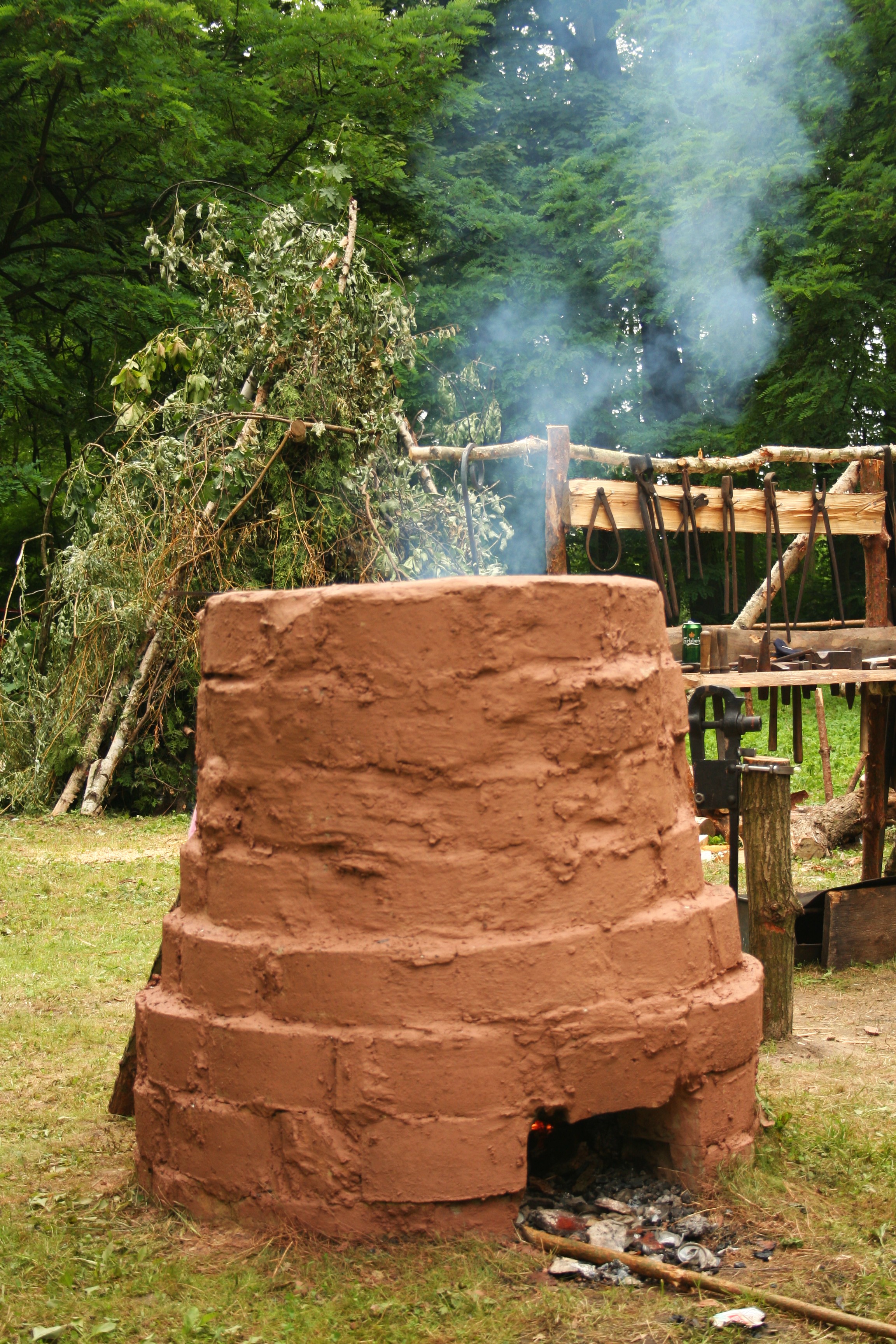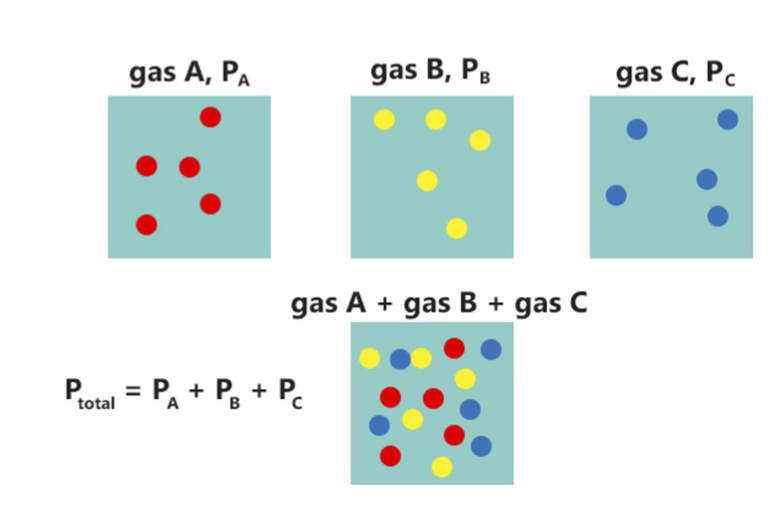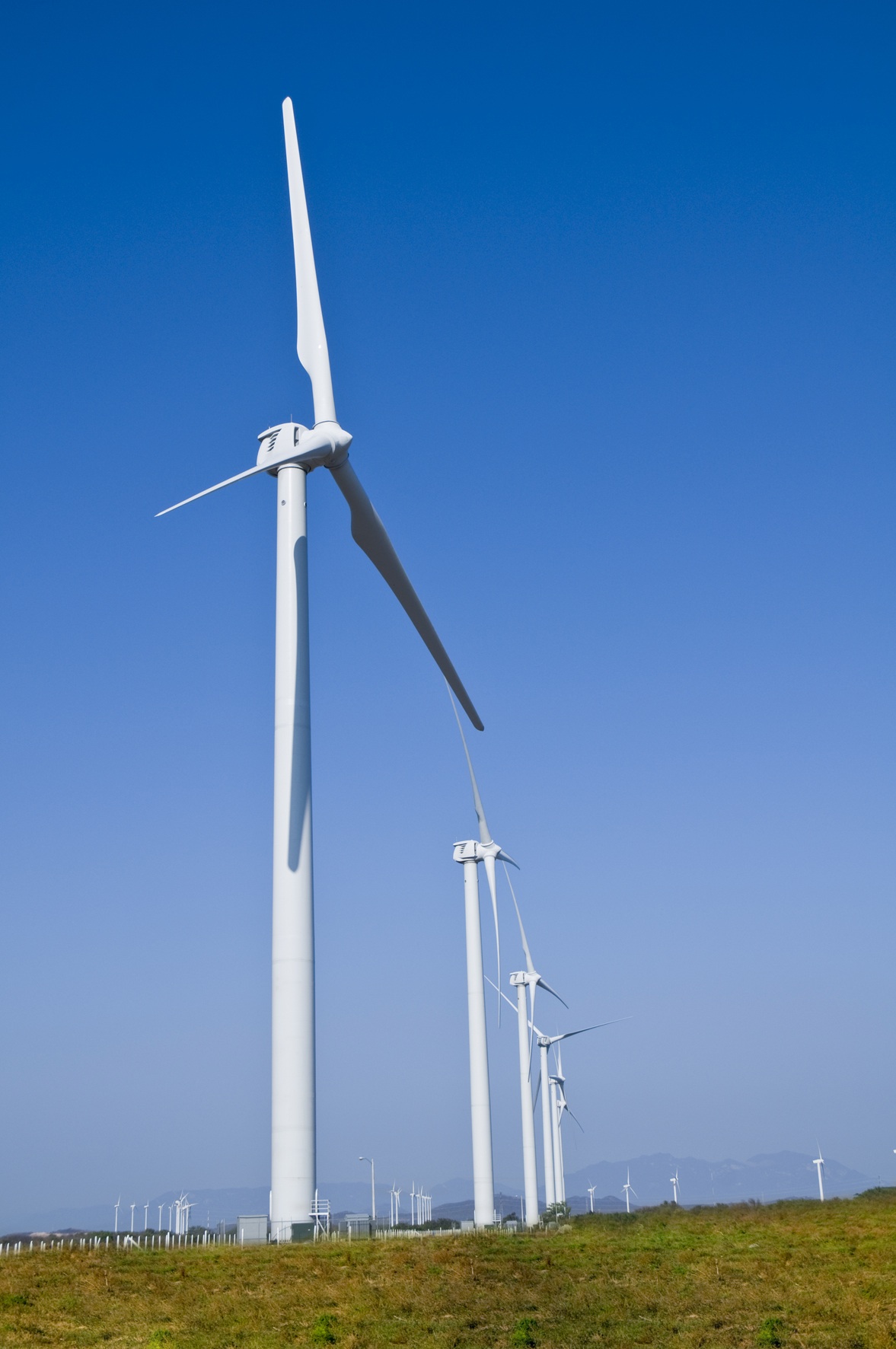|
Trompe
A trompe is a water-powered air compressor, commonly used before the advent of the electric-powered compressor. A trompe is somewhat like an airlift pump working in reverse. Trompes were used to provide compressed air for bloomery furnaces in Catalonia and the USA. The presence of a trompe is a signature attribute of a Catalan forge, a type of bloomery furnace. Trompes can be enormous. At Canadian Hydro Developers' Ragged Chute facility in New Liskeard, Ontario, water falls down a shaft deep and across to generate compressed air for mining equipment and ventilation.Ragged Chutes Operation Trompes are very simple devices. They consist of four main parts: ''water-supply pipe'' or ''shaft'' with an ''air-inlet'' inside it, ''water outflow pipe' ...[...More Info...] [...Related Items...] OR: [Wikipedia] [Google] [Baidu] |
Sprengel Pump
The Sprengel pump is a vacuum pump A vacuum pump is a device that draws gas molecules from a sealed volume in order to leave behind a partial vacuum. The job of a vacuum pump is to generate a relative vacuum within a capacity. The first vacuum pump was invented in 1650 by Otto ... that uses drops of mercury falling through a small-bore capillary tube to trap air from the system to be evacuated. It was invented by Hanover-born chemist Hermann Sprengel in 1865 while he was working in London. The pump created the highest vacuum achievable at that time, less than 1 Pascal (unit), mPa (approximately 1×10−8 atmosphere (unit), atm). Operation The supply of mercury is contained in the reservoir on the left. It flows over into the bulb ''B'', where it forms drops which fall into the long tube on the right. These drops entrap between them the air in ''B''. The mercury which runs out is collected and poured back into reservoir on the left. In this manner practically all the air c ... [...More Info...] [...Related Items...] OR: [Wikipedia] [Google] [Baidu] |
Catalan Forge
A bloomery is a type of metallurgical furnace once used widely for smelting iron from its oxides. The bloomery was the earliest form of smelter capable of smelting iron. Bloomeries produce a porous mass of iron and slag called a ''bloom''. The mix of slag and iron in the bloom, termed ''sponge iron'', is usually consolidated and further forged into wrought iron. Blast furnaces, which produce pig iron, have largely superseded bloomeries. Process A bloomery consists of a pit or chimney with heat-resistant walls made of earth, clay, or stone. Near the bottom, one or more pipes (made of clay or metal) enter through the side walls. These pipes, called ''tuyeres'', allow air to enter the furnace, either by natural draught or forced with bellows or a trompe. An opening at the bottom of the bloomery may be used to remove the bloom, or the bloomery can be tipped over and the bloom removed from the top. The first step taken before the bloomery can be used is the preparation of ... [...More Info...] [...Related Items...] OR: [Wikipedia] [Google] [Baidu] |
Bloomery
A bloomery is a type of metallurgical furnace once used widely for smelting iron from its oxides. The bloomery was the earliest form of smelter capable of smelting iron. Bloomeries produce a porous mass of iron and slag called a ''bloom''. The mix of slag and iron in the bloom, termed '' sponge iron'', is usually consolidated and further forged into wrought iron. Blast furnaces, which produce pig iron, have largely superseded bloomeries. Process A bloomery consists of a pit or chimney with heat-resistant walls made of earth, clay, or stone. Near the bottom, one or more pipes (made of clay or metal) enter through the side walls. These pipes, called '' tuyeres'', allow air to enter the furnace, either by natural draught or forced with bellows or a trompe. An opening at the bottom of the bloomery may be used to remove the bloom, or the bloomery can be tipped over and the bloom removed from the top. The first step taken before the bloomery can be used is the prepara ... [...More Info...] [...Related Items...] OR: [Wikipedia] [Google] [Baidu] |
Pulser Pump
A pulser pump is a gas lift device that uses gravity to pump water to a higher elevation. It has no moving parts. Operation A pulser pump makes use of water that flows through pipes and an air chamber from an upper reservoir to a lower reservoir. The intake is a trompe, which uses water flow to pump air to a separation chamber; air trapped in the chamber then drives an airlift pump. The top of the pipe that connects the upper reservoir to the air chamber is positioned just below the water surface. As the water drops down the pipe, air is sucked down with it. The air forms a "bubble" near the roof of the air chamber. A narrow riser pipe extends from the air chamber up to the higher elevation to which the water will be pumped. Initially the water level will be near the roof of the air chamber. As air accumulates, pressure builds, which will push water up into the riser pipe. At some point the "air bubble" will extend below the bottom of the riser pipe, which will allow some of the ... [...More Info...] [...Related Items...] OR: [Wikipedia] [Google] [Baidu] |
Compressed Air
Compressed air is air kept under a pressure that is greater than atmospheric pressure. Compressed air is an important medium for transfer of energy in industrial processes, and is used for power tools such as air hammers, drills, wrenches, and others, as well as to atomize paint, to operate air cylinders for automation, and can also be used to propel vehicles. Brakes applied by compressed air made large railway trains safer and more efficient to operate. Compressed air brakes are also found on large highway vehicles. Compressed air is used as a breathing gas by underwater divers. It may be carried by the diver in a high pressure diving cylinder, or supplied from the surface at lower pressure through an air line or diver's umbilical. Similar arrangements are used in breathing apparatus used by firefighters, mine rescue workers and industrial workers in hazardous atmospheres. In Europe, 10 percent of all industrial electricity consumption is to produce compressed air� ... [...More Info...] [...Related Items...] OR: [Wikipedia] [Google] [Baidu] |
Hydraulic Ram
A hydraulic ram, or hydram, is a cyclic water pump powered by hydropower. It takes in water at one " hydraulic head" (pressure) and flow rate, and outputs water at a higher hydraulic head and lower flow rate. The device uses the water hammer effect to develop pressure that allows a portion of the input water that powers the pump to be lifted to a point higher than where the water originally started. The hydraulic ram is sometimes used in remote areas, where there is both a source of low-head hydropower and a need for pumping water to a destination higher in elevation than the source. In this situation, the ram is often useful, since it requires no outside source of power other than the kinetic energy of flowing water. History The Alhambra, built by Nasrid Sultan Ibn al-Ahmar of Granada beginning AD1238, used a hydram to raise water. Through a first reservoir, filled by a channel from the Darro River, water emptied via a large vertical channel into a second reservoir b ... [...More Info...] [...Related Items...] OR: [Wikipedia] [Google] [Baidu] |
Bloomery
A bloomery is a type of metallurgical furnace once used widely for smelting iron from its oxides. The bloomery was the earliest form of smelter capable of smelting iron. Bloomeries produce a porous mass of iron and slag called a ''bloom''. The mix of slag and iron in the bloom, termed '' sponge iron'', is usually consolidated and further forged into wrought iron. Blast furnaces, which produce pig iron, have largely superseded bloomeries. Process A bloomery consists of a pit or chimney with heat-resistant walls made of earth, clay, or stone. Near the bottom, one or more pipes (made of clay or metal) enter through the side walls. These pipes, called '' tuyeres'', allow air to enter the furnace, either by natural draught or forced with bellows or a trompe. An opening at the bottom of the bloomery may be used to remove the bloom, or the bloomery can be tipped over and the bloom removed from the top. The first step taken before the bloomery can be used is the prepara ... [...More Info...] [...Related Items...] OR: [Wikipedia] [Google] [Baidu] |
Partial Pressure
In a mixture of gases, each constituent gas has a partial pressure which is the notional pressure of that constituent gas as if it alone occupied the entire volume of the original mixture at the same temperature. The total pressure of an ideal gas mixture is the sum of the partial pressures of the gases in the mixture ( Dalton's Law). The partial pressure of a gas is a measure of thermodynamic activity of the gas's molecules. Gases dissolve, diffuse, and react according to their partial pressures but not according to their concentrations in gas mixtures or liquids. This general property of gases is also true in chemical reactions of gases in biology. For example, the necessary amount of oxygen for human respiration, and the amount that is toxic, is set by the partial pressure of oxygen alone. This is true across a very wide range of different concentrations of oxygen present in various inhaled breathing gases or dissolved in blood; consequently, mixture ratios, like that of breat ... [...More Info...] [...Related Items...] OR: [Wikipedia] [Google] [Baidu] |
Pumps
A pump is a device that moves fluids ( liquids or gases), or sometimes slurries, by mechanical action, typically converted from electrical energy into hydraulic energy. Pumps can be classified into three major groups according to the method they use to move the fluid: ''direct lift'', ''displacement'', and ''gravity'' pumps. Mechanical pumps serve in a wide range of applications such as pumping water from wells, aquarium filtering, pond filtering and aeration, in the car industry for water-cooling and fuel injection, in the energy industry for pumping oil and natural gas or for operating cooling towers and other components of heating, ventilation and air conditioning systems. In the medical industry, pumps are used for biochemical processes in developing and manufacturing medicine, and as artificial replacements for body parts, in particular the artificial heart and penile prosthesis. When a casing contains only one revolving impeller, it is called a single-stage ... [...More Info...] [...Related Items...] OR: [Wikipedia] [Google] [Baidu] |
Energy Conversion
Energy transformation, also known as energy conversion, is the process of changing energy from one form to another. In physics, energy is a quantity that provides the capacity to perform work or moving, (e.g. Lifting an object) or provides heat. In addition to being converted, according to the law of conservation of energy, energy is transferable to a different location or object, but it cannot be created or destroyed. The energy in many of its forms may be used in natural processes, or to provide some service to society such as heating, refrigeration, lighting or performing mechanical work to operate machines. For example, to heat a home, the furnace burns fuel, whose chemical potential energy is converted into thermal energy, which is then transferred to the home's air to raise its temperature. Limitations in the conversion of thermal energy Conversions to thermal energy from other forms of energy may occur with 100% efficiency. Conversion among non-thermal forms of energy ... [...More Info...] [...Related Items...] OR: [Wikipedia] [Google] [Baidu] |
Hydraulic Compressor
A hydraulic compressor is a type of compressor that is designed to convert hydraulic power to pneumatic power. It is used across various industries to improve the efficiency of certain types of machinery. Hydraulic compressors have a hydraulic pump to push air through a pipe, which forces a motor to spin. The motor powers the internal air compressor, releasing air in a chamber as a result. Compressors became more popularized in 1799 when Englishman George Medhurst invented a motorized air compressor as a means for propulsion. They have technologically advanced to the point where they can achieve greater force and precision than humans. Uses Because of the relatively cheap and easy installment of hydraulic compressors, many industries have implemented them into their equipment to effectively work and provide better results. This includes agriculture, automotive, medical, and industrial companies that require engineers or workers to have more output and innovation. Agricultu ... [...More Info...] [...Related Items...] OR: [Wikipedia] [Google] [Baidu] |
Mother Earth News
''Mother Earth News'' is a bi-monthly American magazine that has a circulation of 500,520 . It is published in Topeka, Kansas. Since its founding, ''Mother Earth News'' has promoted renewable energy, recycling, family farms, good agricultural practices, better eating habits, medical self-care, more meaningful education and affordable housing. The magazine approaches environmental problems from a down-to-earth, practical, simple living, how-to standpoint. History Founders John and Jane Shuttleworth started the magazine on a "shoestring" budget of $1500, published from home in 1970. The first issue was published in January of that year. (John Shuttleworth died on March 29, 2009, at his home in Evergreen, Colorado, at the age of 71.) The magazine was originally published in Madison, Ohio, and moved to Hendersonville, North Carolina, later. The headquarters is in Topeka, Kansas. It had a scrappy, no-frills style and appearance throughout the 1970s. ''Mother Earth News'' embrace ... [...More Info...] [...Related Items...] OR: [Wikipedia] [Google] [Baidu] |





